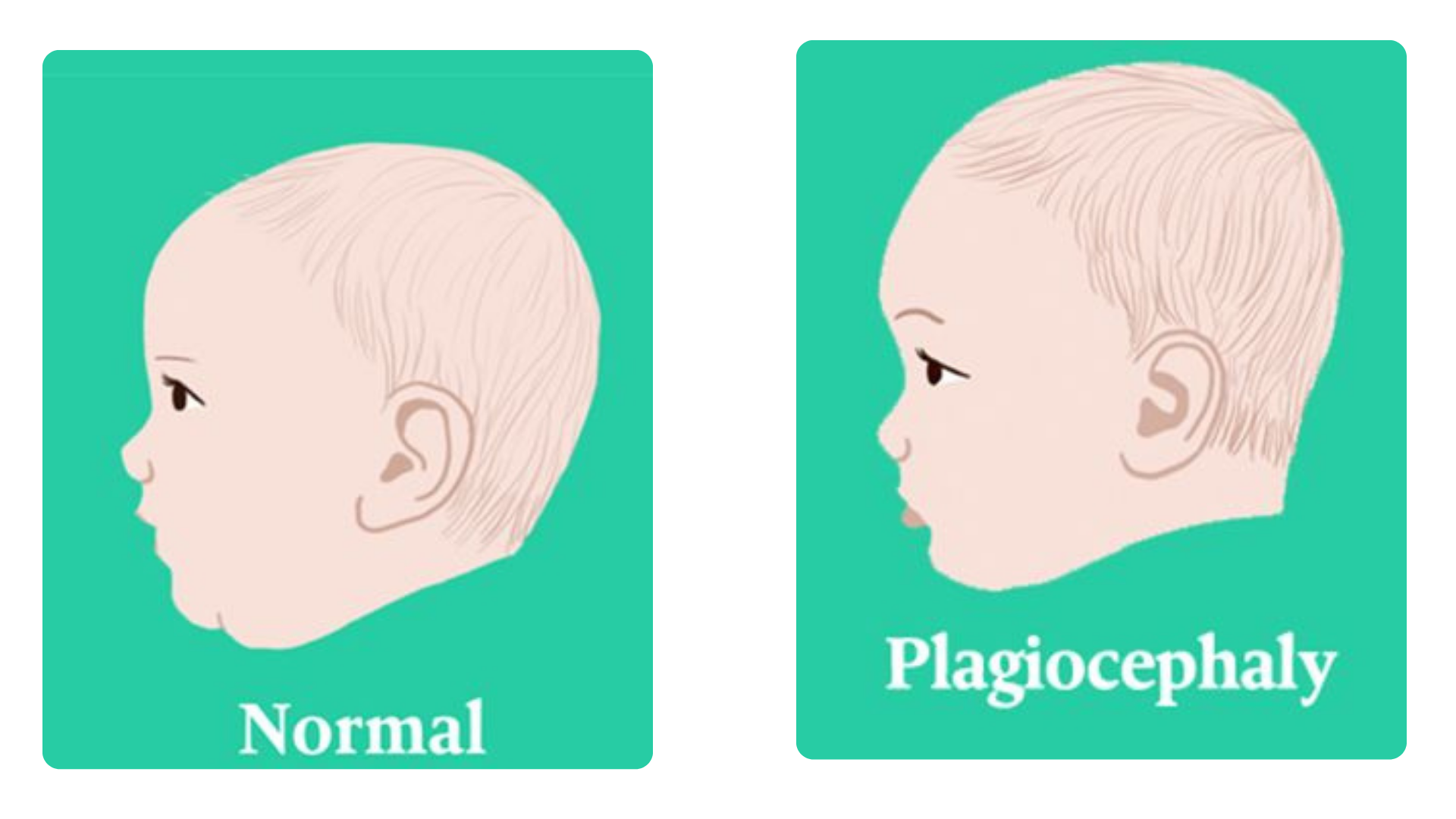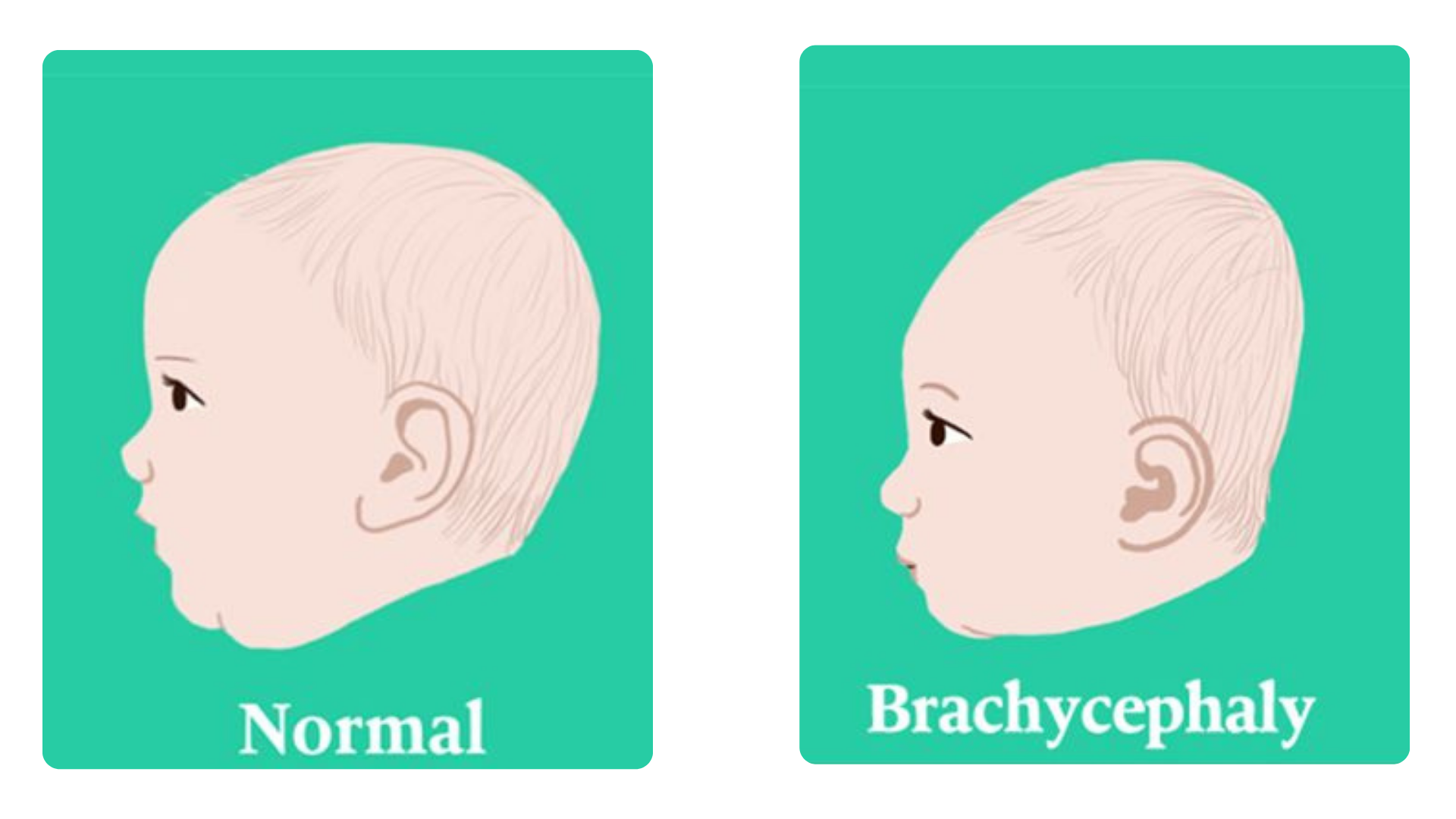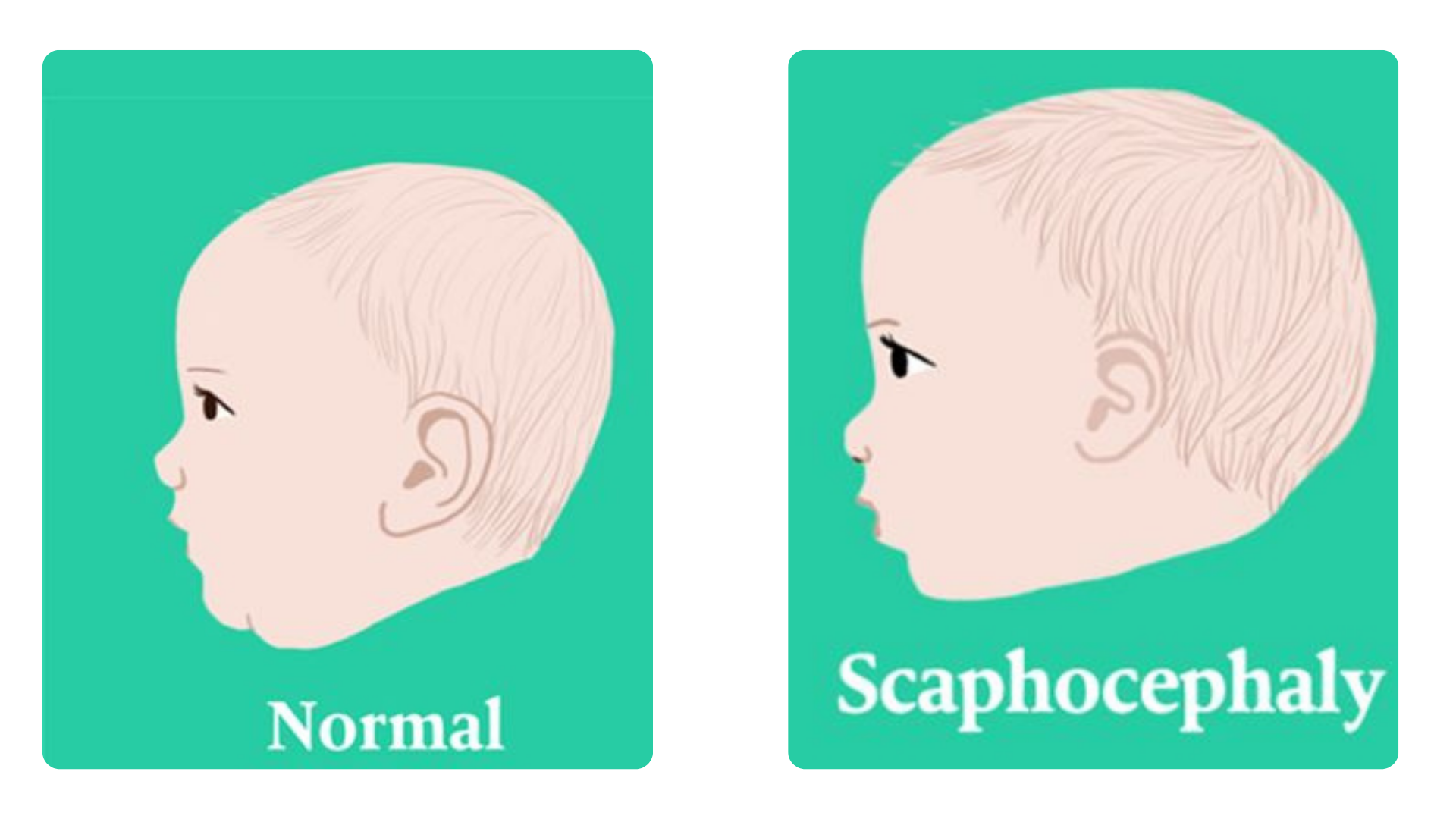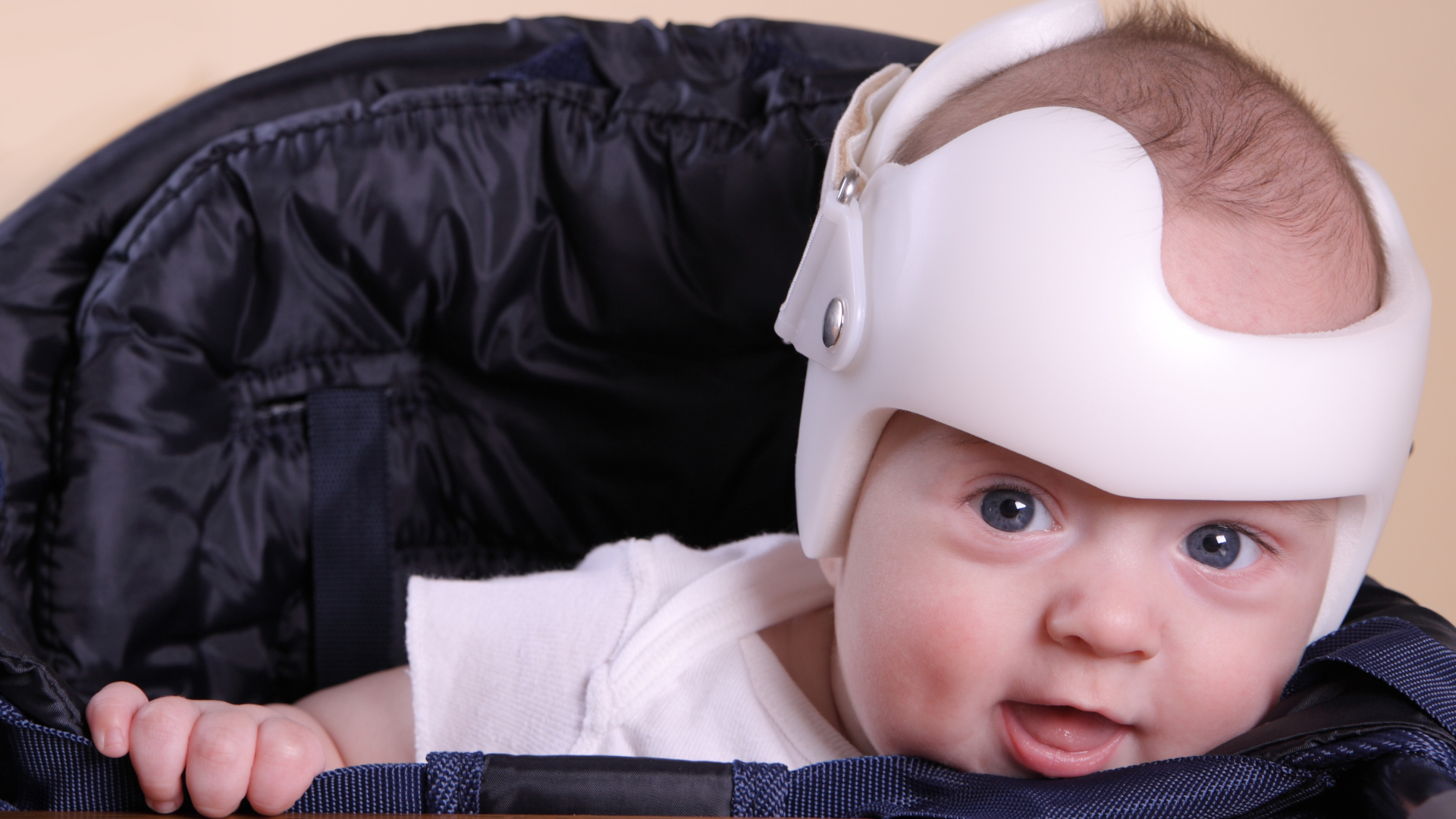Have you ever looked at your baby’s head and wondered if its shape is normal? Many parents ask this question, and it’s a concern worth exploring.
Babies’ skulls are soft and flexible, which means slight unevenness is common in the early months. I once worried about this myself and learned how natural changes often improve over time.
In this blog, I’ll explain what a normal baby’s head shape looks like, the signs that may point to something more serious, and when it’s time to talk to your doctor.
By the end, you’ll know exactly what to watch for and feel reassured about your baby’s head shape and when to worry.
What Does a Normal Baby’s Head Shape Look Like?
A baby’s head is usually round or slightly oval, though minor differences are very common.
During birth, the skull bones shift to help the baby pass through the birth canal. This natural molding may leave the head looking a bit cone-shaped at first.
In most cases, this temporary shape improves within a few weeks as the baby grows. Spending more time upright and moving the head freely also helps balance the shape. Parents often notice the head gradually rounding out as milestones progress.
Soft spots, called fontanelles, are another normal part of a baby’s head. These small openings allow the skull to expand while the brain develops in the first years. They close naturally with age, usually without any intervention.
Signs of Abnormal Baby Head Shapes
It’s common for a baby’s head to look slightly uneven, especially right after birth. But if the shape seems unusual or doesn’t improve over time, it may signal an underlying issue. Here are 5 signs to know:
1. Plagiocephaly (Flat Spot on One Side)

Helmets are often recommended for babies with flatness on one side of the head that doesn’t improve through repositioning. The ideal time to begin therapy is around 4–6 months, when the skull is still soft and growing quickly.
Treatment usually lasts 3–6 months, depending on the severity and rate of head growth.
Most babies show clear rounding and improved symmetry, though minor unevenness may remain. Early evaluation and consistent helmet use make the biggest difference in results.
2. Brachycephaly (Back of Head Flattened)

In brachycephaly, the back of the skull becomes wide and flat due to prolonged pressure, often from sleeping on the back. Helmet therapy typically begins between 4–8 months, when the skull is most responsive to shaping.
Treatment lasts 4–6 months, with periodic adjustments by a cranial specialist to match the baby’s growth.
Parents usually notice significant rounding of the back of the head, though slight flatness may persist. Starting early gives the best outcome and helps restore balance to head width and height.
3. Scaphocephaly (Long, Narrow Head)

Scaphocephaly, also called dolichocephaly, causes the head to look long from front to back and narrow from side to side. It’s most common in premature babies who spend long periods in one position during early care.
Helmet therapy generally starts around 5–8 months, depending on when the condition is identified.
The treatment may continue for 4–6 months, helping to gently widen the skull and balance its shape. When combined with repositioning and physical therapy, results can be impressive, giving the head a more natural contour.
Torticollis & Head Shape: The Hidden Link
Torticollis is a condition where a baby’s neck muscles are tight or shortened, causing their head to tilt to one side. When babies spend a lot of time in this position, they often favor resting on the same part of their head.
Parents may notice their baby struggling to turn their head fully in both directions or preferring one side during sleep and play.
This restricted movement not only affects head shape but can also slow motor development if left untreated.
If you notice persistent tilting, stiffness, or flatness in your baby’s head, it’s best to consult your pediatrician.
Early physical therapy or simple stretching exercises often correct the problem and help restore normal head shape and neck mobility.
How to Check Your Baby’s Head at Home
You don’t need medical tools to notice changes in your baby’s head shape. With regular checks, you can spot small changes early and share them with your pediatrician if needed.
- Look from Above: Place your baby on your lap or a safe surface and gently look down at the top of their head. A normal shape is usually round or slightly oval. Notice if one side looks flatter than the other.
- Check Side Profiles: Sit your baby upright and look at their head from the left and right sides. Both sides should appear similar in slope and curve. Pay attention to any slanting, bulging, or a noticeably long or short shape.
- View from the Front: Face your baby directly and observe how their eyes, ears, and cheeks line up. They should be fairly symmetrical. Uneven features, such as one ear looking forward compared to the other, can signal a head shape concern.
- Feel the Soft Spots: Gently run your hand over the fontanelles (soft spots) on the top of the head. They should feel soft and flat, not bulging or sunken. This check can help you understand normal growth and detect unusual changes.
- Take Reference Photos: Use your phone to take photos from above, the side, and the front every few weeks. Comparing images over time helps you see if the head shape is naturally rounding out or becoming more uneven.
Babies’ Head Shapes: When to Worry
Most babies have slightly uneven head shapes in the first months, often from sleeping in one position. This usually improves as they grow and move more.
You should talk to your doctor if the flattening is severe, one side looks much different than the other, or if you notice bulging, unusual ridges, or delayed growth.
Early checks help rule out conditions like plagiocephaly or craniosynostosis, and your pediatrician can guide you on safe steps to correct the shape.
The “When to Worry” Decision Tree
Head shapes change as babies grow, but knowing what’s normal at each stage helps ease worries. This quick guide shows when to relax and when to call the doctor:
| Baby Age | What’s Normal | When to Worry |
|---|---|---|
| 0–3 months | Mild flattening or unevenness is common due to birth molding and sleep position. | Head shape looks very uneven, soft spots seem closed early, or ridges are visible. |
| 4–6 months | Slight flat spots often improve with repositioning and tummy time. | No improvement, worsening flatness, or asymmetry affecting ear/forehead alignment. |
| 7–9 months | The head should start rounding out naturally as the baby sits more and changes positions. | Head remains flat, long, or asymmetrical despite active movement. |
| 10–12 months | Some minor unevenness can remain, but it usually improves with growth. | Severe or unchanged head shape, or if soft spots seem closed too soon. |
| 12+ months | Head growth slows; most shapes stabilize by this age. | Any significant unevenness, unusual ridges, or developmental delays alongside head shape changes. |
What Your Doctor May Do
Your doctor will check your baby’s head shape during regular visits, measuring for symmetry and feeling soft spots to ensure normal growth.
If the shape seems uneven, they may suggest more tummy time or repositioning and monitor progress over a few months.
For more serious concerns, your baby may be referred to a pediatric specialist. Sometimes imaging tests are done to rule out rare conditions or decide if helmet therapy is needed.
Helmet Therapy: Who Needs It and When

Helmet therapy helps gently reshape a baby’s skull when repositioning and tummy time don’t fully correct flat spots. It works best during the early months when the skull is still growing quickly.
1. Moderate to Severe Plagiocephaly
- When used: For flat spots on one side that don’t improve with repositioning.
- Ideal age window: 4–6 months, while skull flexibility is highest.
- Typical duration: 3–6 months, depending on head growth rate.
- Realistic outcomes: Noticeable rounding of the head, though full symmetry may not always occur.
2. Severe Brachycephaly or Dolichocephaly
- When used: For broad flatness across the back or sides of the skull.
- Ideal age window: 4–8 months, during active skull growth.
- Typical duration: 4–6 months, with regular adjustments by specialists.
- Realistic outcomes: Significant head shape improvement, with mild flat areas sometimes remaining.
3. Cases Linked to Torticollis or Limited Mobility
- When used: When tight neck muscles or limited head movement cause persistent flat spots.
- Ideal age window: 5–7 months, once therapy for neck mobility begins.
- Typical duration: 3–5 months, combined with physical therapy.
- Realistic outcomes: Corrects unevenness effectively as neck strength and range of motion improve.
4. Late-Diagnosed Flatness in Older Babies
- When used: For babies diagnosed after 8 months with noticeable skull flattening.
- Ideal age window: 8–12 months, though earlier is better for faster progress.
- Typical duration: 6+ months, since skull growth slows after the first year.
- Realistic outcomes: Gradual improvement is possible, but complete correction is less likely at this stage.
Prevention Tips and Positioning Plan for a Healthy Head Shape
Taking small, consistent steps from the start can help your baby’s head develop evenly. These daily habits are simple, safe, and can easily fit into your routine.
- Give your baby daily tummy time: Start with a few minutes and gradually increase as they grow. This strengthens neck and shoulder muscles while relieving pressure on the back of the head.
- Change head position during sleep: Alternate the direction your baby’s head faces in the crib each night to avoid pressure on the same spot.
- Hold your baby often: Use slings, carriers, or upright holding positions to reduce the time spent in car seats, swings, or bouncers.
- Vary feeding positions: Switch arms while breastfeeding or bottle-feeding to encourage your baby to turn their head both ways.
- Encourage active floor play: Give your baby plenty of supervised time on the floor to roll, reach, and build neck strength.
- Use a firm, flat sleep surface: Always follow safe sleep guidelines — no pillows, wedges, or cushions in the crib.
- Promote balanced movement: Place toys or your face on alternating sides to help your baby look both directions equally.
- Limit time in baby gear: Avoid long periods in swings, bouncers, or car seats to prevent constant pressure on the same area.
Conclusion
Most babies develop round and healthy head shapes as they grow, even if there’s some unevenness at first.
You know now what’s normal, the signs of concern, and when to seek medical guidance. Learning the natural timeline of head shape development can bring peace of mind.
Doctors can guide you through monitoring, repositioning, and therapies if needed. By acting early, you give your baby the best chance at a healthy head shape.
Keep up with tummy time, regular checks, and safe routines, and you’ll feel more confident about your baby’s growth.
Check your baby’s head shape today, and talk to your pediatrician if you have concerns.










